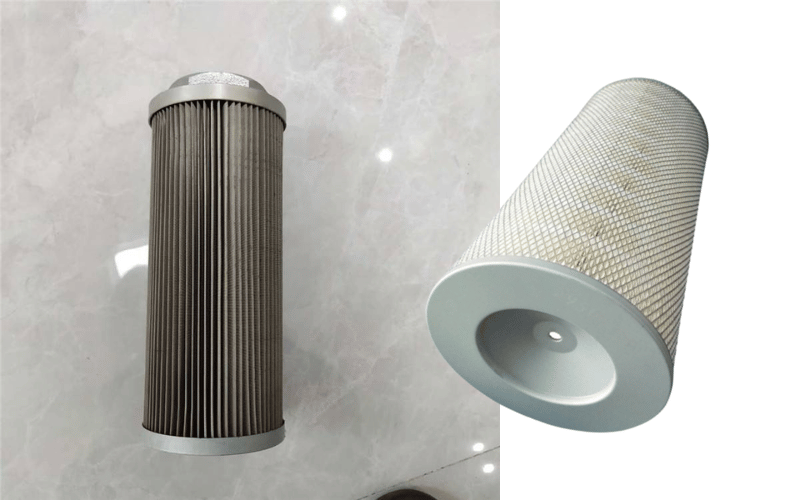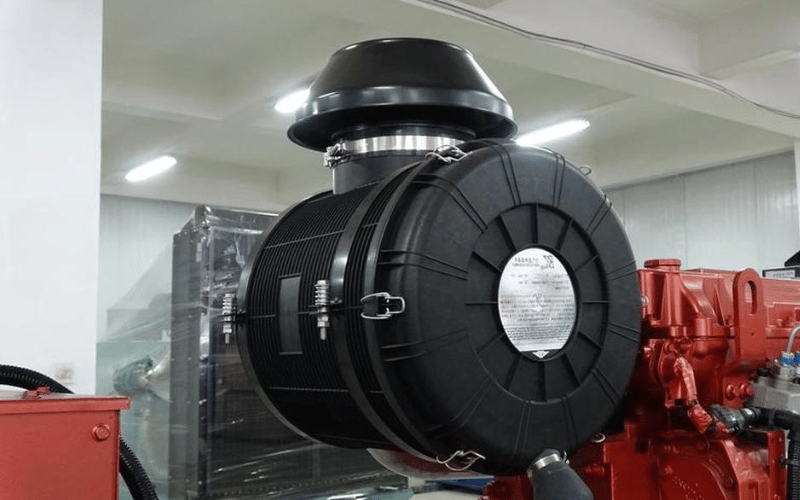Air filtration plays a pivotal role in the power generation industry, ensuring the efficiency, reliability, and environmental compliance of power plants. From coal-fired facilities to renewable energy plants, effective filtration systems are crucial for removing harmful particulates, safeguarding critical equipment, and ensuring air quality standards are met. This blog examines advanced filter solutions specifically designed to address the unique challenges of power plants, emphasizing their crucial role in optimizing operations and minimizing environmental impact.
Table of Contents
ToggleThe Importance of Filtration in Power Generation
Filtration plays a critical role in ensuring the efficiency, reliability, and longevity of power generation systems. Power plants operate in environments where air, water, and fuel are exposed to various contaminants, including dust, debris, and chemical impurities. These contaminants can cause significant wear and tear on equipment, reduce operational efficiency, and lead to costly downtime. Proper filtration systems are essential for removing these impurities, protecting sensitive components, and maintaining optimal performance.
In power generation, filtration is not limited to a single process but spans multiple areas, including air intake systems, fuel delivery, and cooling water systems. Each filtration system is designed to address specific challenges, such as preventing particulate matter from entering turbines or ensuring clean fuel combustion. By implementing effective filtration solutions, power plants can reduce maintenance costs, improve energy efficiency, and comply with environmental regulations.
Role of Air Filtration in Power Plants
Air filtration is one of the most critical aspects of power plant operations, particularly for gas turbines and other combustion-based systems. Turbines require a consistent supply of clean air to function efficiently, but the air drawn into the system often contains dust, pollen, and other airborne particles. Without proper filtration, these contaminants can accumulate on turbine blades, reducing their aerodynamic efficiency and causing imbalances that lead to vibration and wear.
High-quality air filters are designed to capture even the tiniest particles, ensuring that only clean air enters the system. Advanced filtration technologies, such as HEPA filters and electrostatic precipitators, are commonly used in power plants to achieve high levels of air purity. These systems not only protect the turbines but also enhance overall plant efficiency by reducing the energy required to compensate for performance losses resulting from contamination.
Impact of Contaminants on Turbine Performance
Contaminants in the air, fuel, or water used in power generation can have a detrimental impact on turbine performance. For example, airborne particles that bypass the filtration system can erode turbine blades, leading to reduced efficiency and increased fuel consumption. Similarly, impurities in the fuel can cause deposits to form on critical components, disrupting combustion and lowering energy output.
Water used for cooling or steam generation is another potential source of contamination. Minerals, salts, and biological growth in the water can lead to scaling and corrosion in boilers and heat exchangers, reducing their effectiveness and increasing maintenance requirements. By addressing these contamination issues through robust filtration systems, power plants can minimize equipment degradation, extend the lifespan of critical components, and maintain consistent energy production.
Overview of Power Generation Filters
Power generation filters are specialized systems designed to address the unique challenges of maintaining clean air, fuel, and water in power plants. These filters come in various types, each tailored to specific applications:
- Air Intake Filters: Used to remove dust, pollen, and other airborne particles from the air entering turbines and other combustion systems.
- Fuel Filters: Designed to eliminate impurities from fuel, ensuring clean combustion and preventing deposits on engine components.
- Water Filters: Used in cooling and steam generation systems to remove minerals, salts, and biological contaminants that can cause scaling and corrosion.
- Oil Filters: Essential for maintaining the cleanliness of lubricating oils, which protect moving parts in turbines and generators.
Each type of filter is engineered to meet the demanding conditions of power generation, including high temperatures, pressure variations, and exposure to corrosive substances. By integrating these filtration systems into their operations, power plants can achieve greater efficiency, reduce downtime, and ensure compliance with environmental standards.
Types of Filtration Equipment for Power Plants
Filtration equipment is a critical component in power plants, ensuring the smooth operation of machinery and the consistent production of energy. These systems are designed to remove contaminants from air, water, and fuel, protecting sensitive equipment like turbines, boilers, and generators. Different types of filtration equipment are used depending on the specific needs of the plant, such as air intake filtration for turbines or water filtration for cooling systems. Below, we explore some of the most commonly used filtration systems in power plants, focusing on their design, functionality, and benefits.
Baghouse Filters: Design and Functionality
Baghouse filters are widely used in power plants to control air pollution and remove particulate matter from exhaust gases. These systems consist of a series of fabric filter bags housed within a large enclosure. As exhaust gases pass through the baghouse, fine particles are trapped on the surface of the filter bags, allowing clean air to exit the system.
The design of baghouse filters is highly efficient, with some systems capable of capturing particles as small as 1 micron. They are particularly effective in coal-fired power plants, where they help reduce emissions of fly ash and other pollutants. Regular cleaning of the filter bags, often achieved through pulse-jet or reverse air mechanisms, ensures consistent performance and extends the lifespan of the system. By using baghouse filters, power plants can meet stringent environmental regulations while maintaining efficient operations.
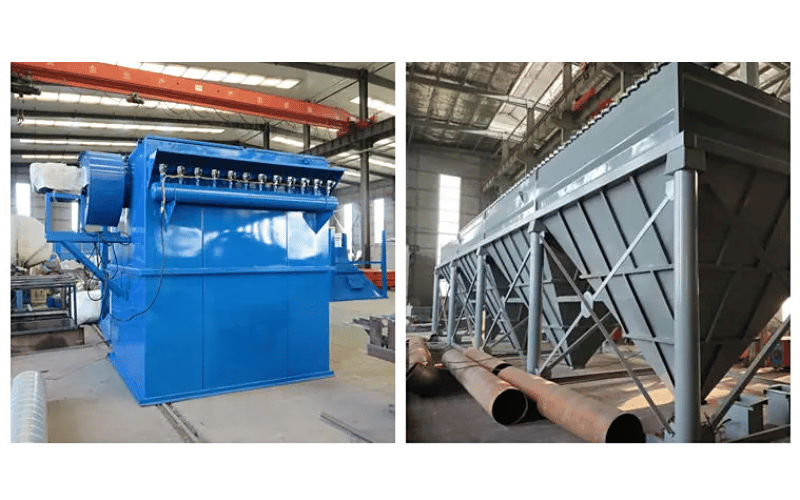
Cartridge Filters for High Efficiency
Cartridge filters are another essential type of filtration equipment used in power plants, particularly for applications requiring high levels of filtration efficiency. These filters consist of cylindrical cartridges made from pleated filter media, which increases the surface area for capturing contaminants. Cartridge filters are commonly used in water treatment systems, fuel filtration, and even air intake systems for smaller turbines.
One of the key advantages of cartridge filters is their ability to remove both large and fine particles, making them suitable for a wide range of applications. They are also easy to replace, which minimizes downtime during maintenance. In power plants, cartridge filters are often used in combination with other filtration systems to provide an additional layer of protection, ensuring that water, fuel, and air meet the required purity standards.
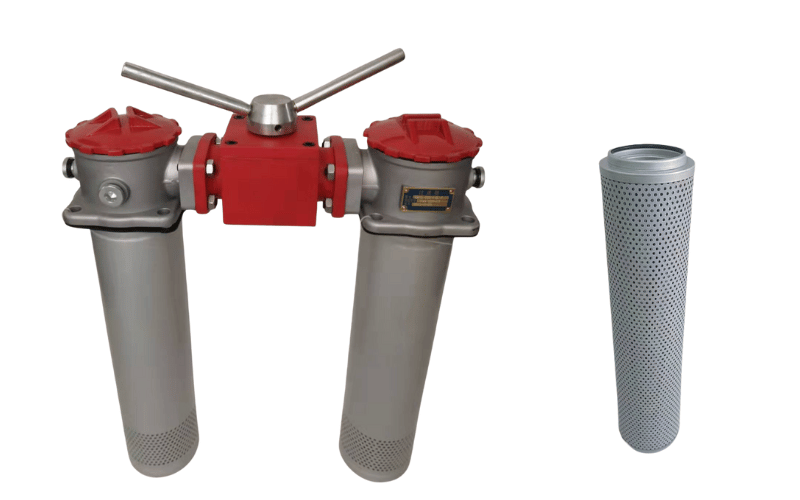
Gas Turbine Air Intake Filters
Gas turbine air intake filters are specifically designed to protect turbines from airborne contaminants that can reduce efficiency and cause damage. These filters are critical in environments where dust, pollen, and other particles are prevalent, as even small amounts of debris can erode turbine blades and disrupt airflow.
Air intake filters for gas turbines typically consist of multiple stages, including pre-filters to capture larger particles and fine filters for smaller contaminants. Advanced systems may also include high-efficiency particulate air (HEPA) filters or electrostatic precipitators for enhanced performance. The design of these filters ensures minimal pressure drop, allowing turbines to operate at peak efficiency without being hindered by restricted airflow.
By utilizing high-quality air intake filters, power plants can prolong the lifespan of their turbines, lower maintenance costs, and enhance overall energy efficiency. These filters are an indispensable part of modern power generation, ensuring that turbines operate reliably even in challenging environmental conditions.
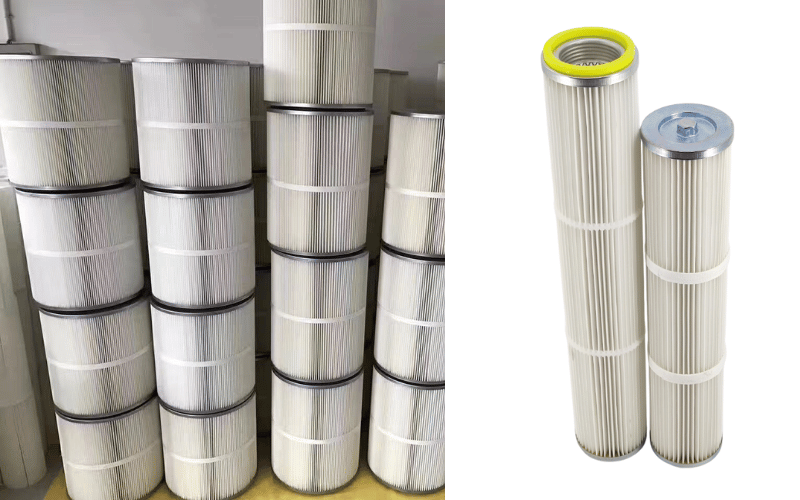
Filtration Solutions for Coal Power Plants
Coal-fired power plants face unique challenges in maintaining operational efficiency and meeting environmental standards. Filtration systems play a vital role in addressing these challenges by removing contaminants from air, water, and fuel, ensuring the longevity of equipment and compliance with emissions regulations. Below, we examine the specific filtration requirements of coal power plants, the systems employed to address these needs, and the importance of selecting the appropriate filter media for optimal performance.
Challenges in Coal-Fired Power Generation
Coal power plants operate in harsh environments where equipment is exposed to high levels of dust, ash, and other particulate matter. These contaminants can cause significant wear and tear on machinery, leading to reduced efficiency and increased maintenance costs. Additionally, coal combustion produces harmful emissions, including sulfur dioxide (SO₂), nitrogen oxides (NOₓ), and particulate matter, which must be controlled to meet stringent environmental regulations.
Another challenge is managing the water used in cooling and steam generation processes. Water in coal power plants often contains impurities such as minerals, salts, and suspended solids, which can lead to scaling, corrosion, and fouling in boilers and heat exchangers. Effective filtration systems are crucial in addressing these issues, ensuring smooth operations and minimizing downtime.
Filtration Systems for Contaminant Removal
Coal power plants rely on a variety of filtration systems to remove contaminants from air, water, and fuel. Each system is designed to address specific challenges:
- Baghouse Filters: These are used to capture fine particulate matter from flue gases, reducing emissions and protecting downstream equipment. Baghouse filters are highly effective in removing fly ash and other combustion byproducts, ensuring compliance with air quality standards.
- Electrostatic Precipitators (ESPs): Often used alongside baghouse filters, ESPs use an electric charge to remove fine particles from exhaust gases. They are particularly effective in capturing submicron particles that are difficult to filter using traditional methods.
- Water Filtration Systems: These include sand filters, cartridge filters, and reverse osmosis systems, which remove impurities from cooling and boiler feedwater. Proper water filtration prevents scaling and corrosion, extending the lifespan of critical components.
- Fuel Filtration Systems: These systems remove contaminants from coal slurry or other fuel sources, ensuring clean combustion and reducing the risk of deposits forming on boiler surfaces.
By integrating these filtration systems, coal power plants can improve efficiency, reduce maintenance costs, and meet environmental compliance requirements.
Filter Media Selection for Coal Power Plants
The choice of filter media is a crucial factor in determining the performance of filtration systems in coal-fired power plants. Different applications require specific media to effectively capture contaminants while withstanding the harsh operating conditions of a power plant.
- Fabric Media for Baghouse Filters: Materials such as fiberglass, polyester, and PTFE (polytetrafluoroethylene) are commonly used in baghouse filters. These fabrics are designed to withstand high temperatures and resist chemical degradation, ensuring long-lasting performance.
- Ceramic Media for High-Temperature Applications: In systems exposed to extreme heat, such as flue gas filtration, ceramic filter media is often used due to its durability and ability to capture fine particles.
- Activated Carbon for Water Filtration: Activated carbon is highly effective in removing organic compounds, chlorine, and other impurities from water, making it a popular choice for cooling and boiler feedwater systems.
- Pleated Media for Cartridge Filters: Pleated filter media increases the surface area for contaminant capture, making it ideal for applications requiring high filtration efficiency, such as water and fuel filtration.
Selecting the right filter media not only enhances the efficiency of filtration systems but also reduces operational costs by extending the lifespan of the filters and minimizing the need for frequent replacements. Proper media selection ensures that coal power plants can operate reliably while meeting environmental and performance standards.
Maintenance and Replacement of Filters
Proper maintenance and timely replacement of filters are essential for ensuring the efficiency and longevity of filtration systems in industrial and power generation settings. Filters play a critical role in removing contaminants from air, water, and fuel, but over time, they become saturated and lose their effectiveness. Neglecting filter maintenance can lead to reduced system performance, increased energy consumption, and costly equipment damage. By following best practices for filter replacement and maintenance, facilities can optimize their operations, minimize downtime, and extend the lifespan of their equipment.
Filter Replacement Best Practices
Replacing filters at the right time is crucial for maintaining the performance of filtration systems. Overused filters can become clogged, leading to reduced flow rates and increased pressure drop, which can strain equipment and reduce efficiency. To ensure optimal performance, follow these best practices:
- Monitor Filter Life: Use filter life indicators, pressure gauges, or scheduled maintenance logs to track when filters need replacement. Many modern systems come with built-in sensors that alert operators when a filter is nearing the end of its lifespan.
- Inspect Filters Regularly: Conduct routine inspections to check for visible signs of wear, damage, or clogging. Early detection of issues can prevent more significant problems down the line.
- Use Manufacturer-Recommended Filters: Always replace filters with those recommended by the manufacturer to ensure compatibility and performance. Using substandard or incorrect filters can compromise the system’s efficiency.
- Follow Proper Installation Procedures: Ensure that new filters are installed correctly, with a secure fit and proper alignment. Improper installation can lead to bypassing, where unfiltered air, water, or fuel enters the system.
- Dispose of Used Filters Responsibly: Many filters can be recycled or disposed of in an environmentally friendly manner. Check local regulations and recycling programs for proper disposal methods.
By adhering to these practices, facilities can maintain consistent filtration performance and avoid unnecessary operational disruptions.
Minimizing Downtime During Filter Changes
Filter replacement can sometimes lead to operational downtime, which can be costly for industrial facilities and power plants. However, with proper planning and execution, downtime can be minimized. Here are some strategies to streamline the filter replacement process:
- Schedule Replacements During Low-Demand Periods: Plan filter changes during times of reduced operational demand to minimize the impact on production.
- Use Quick-Change Systems: Invest in filtration systems designed for easy and rapid filter replacement. These systems often feature tool-free designs or modular components that reduce the time required for maintenance.
- Maintain Spare Filters: Keep an inventory of replacement filters on-site to avoid delays caused by ordering and shipping. Ensure that the stock is regularly updated to match the system’s requirements.
- Train Maintenance Staff: Provide training for maintenance personnel to ensure they are familiar with the filter replacement process and can perform it efficiently.
- Implement Redundant Systems: In critical applications, consider using redundant filtration systems that allow one system to remain operational while the other undergoes maintenance.
By implementing these strategies, facilities can reduce downtime and maintain continuous operations, even during routine filter maintenance.
Pressure Drop Considerations in Filter Systems
Pressure drop is a critical factor to consider in the design and maintenance of filtration systems. As filters become clogged with contaminants, the resistance to airflow or fluid flow increases, resulting in a higher pressure drop. This can lead to reduced system efficiency, increased energy consumption, and potential damage to equipment.
To manage pressure drop effectively, it is essential to monitor system performance regularly. Pressure gauges or differential pressure sensors can provide real-time data on the condition of the filters. When the pressure drop exceeds the recommended threshold, it is a clear indication that the filters need to be replaced.
Selecting the right filter media can also help minimize pressure drop. High-efficiency filters with pleated or layered designs offer a larger surface area for contaminant capture, reducing resistance to flow. Additionally, maintaining clean filters and ensuring proper installation can prevent unnecessary pressure increases.
By addressing pressure drop considerations, facilities can optimize the performance of their filtration systems, reduce energy costs, and extend the lifespan of their equipment. Regular monitoring and timely maintenance are key to achieving these goals.
Future Trends in Power Generation Filtration
As the energy sector evolves to meet growing demands for efficiency, sustainability, and compliance, filtration systems in power generation are also undergoing significant advancements. The future of filtration in power plants is being shaped by technological innovations, stricter environmental regulations, and the need for cleaner, more efficient operations. Below, we explore the key trends and developments that are redefining filtration solutions in the power generation industry.
Advancements in Filtration Technology
The rapid pace of technological innovation is driving the development of more efficient and durable filtration systems for power plants. One of the most notable advancements is the use of nanotechnology in filter media. Nanofiber-based filters offer superior contaminant capture due to their wonderful fibers, which can trap even the smallest particles while maintaining low pressure drop. This makes them ideal for applications such as gas turbine air intake systems, where both efficiency and airflow are critical.
Another significant advancement is the integration of smart filtration systems equipped with sensors and IoT (Internet of Things) technology. These systems can monitor filter performance in real time, providing data on pressure drop, contaminant levels, and filter life. This allows operators to optimize maintenance schedules, reduce downtime, and extend the lifespan of filtration equipment. Additionally, self-cleaning filters are becoming more prevalent, particularly in environments with high levels of particulate matter. These systems use automated mechanisms to remove accumulated debris, ensuring consistent performance without the need for frequent manual intervention.
Regulatory Impact on Filtration Solutions
Stricter environmental regulations are playing a pivotal role in shaping the future of filtration systems in power generation. Governments and regulatory bodies worldwide are imposing tighter limits on emissions, including particulate matter, sulfur dioxide (SO₂), and nitrogen oxides (NOₓ). To comply with these standards, power plants are investing in advanced filtration technologies that can effectively capture and reduce harmful pollutants.
For instance, baghouse filters and electrostatic precipitators are being upgraded to meet more stringent emission limits. These systems are now designed to capture even finer particles, ensuring compliance with air quality standards. Similarly, water filtration systems are being enhanced to address regulations on wastewater discharge, with technologies like reverse osmosis and ultrafiltration becoming more common in power plants.
The push for renewable energy sources is also influencing filtration solutions. As power plants transition to cleaner fuels like natural gas or adopt hybrid systems that combine fossil fuels with renewable energy, filtration systems must adapt to new operational requirements. This includes the development of filters that can handle varying contaminant profiles and operate efficiently under different conditions.
Innovations in Air Purification for Power Plants
Air purification is a critical aspect of power generation, particularly for gas turbines and other combustion-based systems. Recent innovations in air filtration are focused on improving efficiency, reducing maintenance, and enhancing the overall performance of power plants.
One of the most promising developments is the use of high-efficiency particulate air (HEPA) filters in gas turbine air intake systems. These filters can capture up to 99.97% of airborne particles, including fine dust, pollen, and other contaminants. By ensuring that only clean air enters the turbine, HEPA filters help maintain optimal performance and reduce the risk of equipment damage.
Electrostatic air cleaners are another innovation gaining traction in power plants. These systems use an electric charge to attract and capture particles, offering a highly efficient and low-maintenance solution for air purification. Additionally, hybrid filtration systems that combine mechanical and electrostatic filtration are being developed to provide even greater contaminant removal capabilities.
The integration of predictive maintenance tools is also transforming air purification in power plants. By utilizing data analytics and machine learning, these tools can accurately predict when filters require replacement or cleaning, enabling operators to address issues before they impact performance. This not only reduces downtime but also extends the lifespan of air filtration systems, making them more cost-effective in the long run.
As power plants continue to adopt these innovations, air purification systems will play an increasingly important role in ensuring efficient, reliable, and environmentally friendly operations.
Frequently Asked Questions
Q: What are power plant filters, and why are they important?
A: Power plant filters are critical components designed to remove particulate matter and impurities from air, flue gases, and other systems in power generation facilities. They play a vital role in maintaining air quality, improving equipment efficiency, and ensuring reliable power generation while minimizing environmental impact.
Q: How does the filtration process work in power plants?
A: Filtration in power plants involves using specialized filters, such as bag filters and cartridge filters, to capture dust, debris, and other contaminants from intake air or flue gases. This process protects equipment like turbines and generators, maintains system efficiency, and ensures consistent power output.
Q: What is the difference between a bag filter and a cartridge filter?
A: Bag filters and cartridge filters differ in design and application. Bag filters have a larger surface area and higher dust-holding capacity, making them ideal for environments with high particulate levels. Cartridge filters, on the other hand, are compact and provide high filtration efficiency, making them suitable for applications with limited space.
Q: How often should filters be replaced in power plants?
A: Filter replacement frequency depends on factors like the type of power generation, dust levels, and the filter’s application. It’s best to monitor filter performance using pressure drop indicators and replace filters when they reach their dust-holding capacity to maintain air quality and system efficiency.
Q: What are the benefits of using high-efficiency filters in power plants?
A: High-efficiency filters enhance power plant performance by providing superior particulate removal, which protects equipment from wear and corrosion. They extend the lifespan of critical components, reduce operational costs, and help facilities comply with strict air quality regulations.
Q: Can filters in power plants reduce maintenance costs?
A: Yes, effective filtration reduces maintenance costs by protecting equipment like turbines and generators from dust and debris. Clean air minimizes wear and tear, reduces downtime, and extends the operational life of key components, leading to lower overall maintenance expenses.
Q: What role do prefilters play in power plant filtration systems?
A: Prefilters act as the first line of defense, capturing larger particles before they reach the main filters. This improves the performance of primary filters, extends their service life, and reduces the frequency of replacements, ultimately lowering operational costs.
Q: What types of power generation facilities use filtration systems?
A: Filtration systems are used in a variety of power generation facilities, including coal-fired plants, natural gas plants, nuclear power plants, and renewable energy facilities like wind and solar. Each type of facility requires tailored filtration solutions to meet its specific operational and air quality needs.
Conclusion
In the ever-evolving landscape of power generation, air filtration systems are more than just a necessity—they are a cornerstone of operational efficiency and environmental responsibility. By investing in advanced filtration technologies, power plants can enhance equipment performance, reduce maintenance costs, and meet stringent emissions regulations. Whether it’s bag filters, cartridge filters, or innovative prefilters, the right solutions can make a significant difference in ensuring sustainable and reliable energy production.


